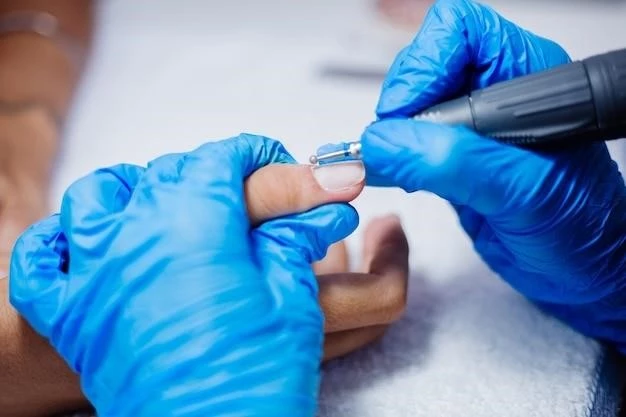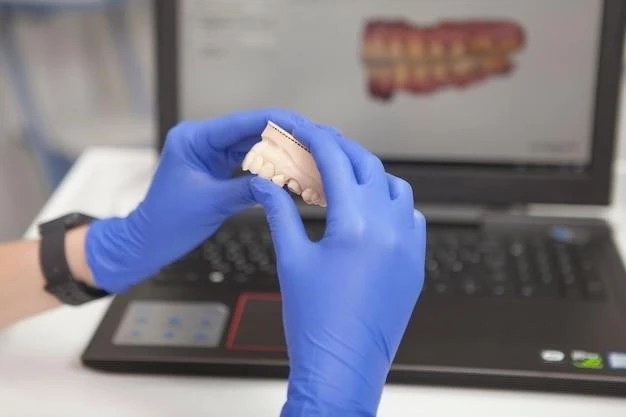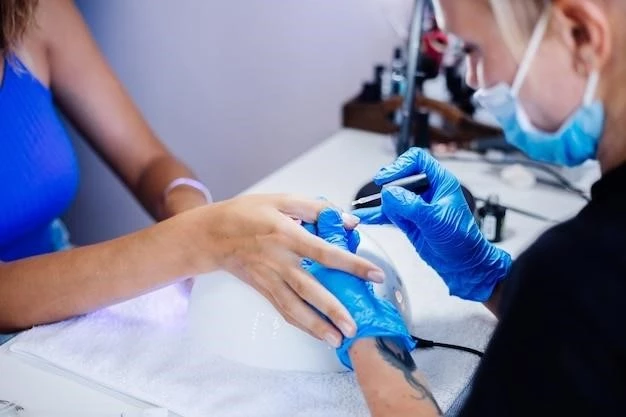Overview of Tricho Odonto Onycho Dermal Syndrome
Cleft lip or palate. Ectodermal abnormalities like hypodontia‚ smooth tongue‚ nail dystrophy‚ dry skin‚ Keratoderma‚ and hyperhidrosis are common in Odonto Onycho Dermal Syndrome.
Definition and Background
Tricho Odonto Onycho Dermal Syndrome‚ also known as Odonto Onycho Dermal Dysplasia‚ is a rare genetic disorder characterized by various ectodermal abnormalities such as severe oligodontia‚ onychodysplasia‚ palmoplantar hyperkeratosis‚ dry skin‚ and hyperhidrosis of palms and soles. This autosomal recessive syndrome was first reported in 1983 and is caused by mutations in the WNT10A gene. The syndrome presents with distinctive features including tooth agenesis‚ nail abnormalities‚ and skin issues‚ impacting both physical appearance and quality of life.

Clinical Features of the Syndrome
Cleft lip or palate. Ectodermal abnormalities like hypodontia‚ smooth tongue‚ nail dystrophy‚ dry skin‚ and hyperhidrosis of palms and soles are common in Tricho Odonto Onycho Dermal Syndrome.
Ectodermal Abnormalities
Tricho Odonto Onycho Dermal Syndrome presents with various ectodermal abnormalities‚ including severe hypodontia‚ onychodysplasia‚ palmoplantar hyperkeratosis‚ dry skin‚ and hyperhidrosis of palms and soles. These manifestations significantly impact the physical appearance and overall well-being of affected individuals. The syndrome‚ caused by mutations in the WNT10A gene‚ affects hair‚ teeth‚ nails‚ and skin‚ leading to a distinctive set of clinical features that characterize this rare genetic disorder.
Genetic Mutations
Tricho Odonto Onycho Dermal Syndrome is caused by mutations in the WNT10A gene‚ with identified mutations leading to severe hypodontia‚ nail dystrophy‚ smooth tongue‚ dry skin‚ keratoderma‚ and hyperhidrosis. The genetic basis of this rare syndrome involves autosomal recessive inheritance‚ impacting various ectodermal structures such as hair‚ teeth‚ nails‚ and skin. Understanding these genetic mutations is crucial for accurate diagnosis and management of the syndrome.
Diagnosis and Differential Diagnosis
Cleft lip or palate. Ectodermal abnormalities like hypodontia‚ smooth tongue‚ nail dystrophy‚ dry skin‚ and hyperhidrosis of palms and soles are common in Tricho Odonto Onycho Dermal Syndrome. Diagnosis involves identifying genetic mutations in the WNT10A gene.
Diagnostic Procedures
Tricho Odonto Onycho Dermal Syndrome is diagnosed based on clinical features such as severe oligodontia‚ nail dystrophy‚ dry skin‚ and hyperhidrosis‚ along with genetic testing to identify mutations in the WNT10A gene. Diagnostic procedures may include radiographic imaging to assess dental abnormalities and dermatological assessments for skin conditions. Differential diagnosis involves distinguishing this syndrome from other ectodermal dysplasias with similar phenotypic characteristics.
Comparison with Similar Syndromes
Tricho Odonto Onycho Dermal Syndrome shares similarities with other ectodermal dysplasias such as odonto-onycho-dermal dysplasia. While each syndrome presents unique clinical features‚ the hallmark of severe hypodontia‚ nail dystrophy‚ smooth tongue‚ dry skin‚ and hyperhidrosis can aid in distinguishing Tricho Odonto Onycho Dermal Syndrome from related conditions. Genetic mutations‚ specifically in the WNT10A gene‚ play a crucial role in differentiating these syndromes and guiding accurate diagnosis and management.
Management of Tricho Odonto Onycho Dermal Syndrome focuses on addressing ectodermal abnormalities through a multidisciplinary approach involving dental care‚ dermatological interventions‚ and genetic counseling. Treatment strategies aim to alleviate symptoms and improve quality of life for affected individuals‚ encompassing comprehensive oral care‚ skin moisturization‚ and personalized therapeutic interventions based on the specific manifestations of the syndrome.
Management of Tricho Odonto Onycho Dermal Syndrome
Management of Tricho Odonto Onycho Dermal Syndrome involves a comprehensive approach to address the diverse ectodermal abnormalities. Treatment strategies focus on enhancing oral health‚ managing skin conditions‚ and providing genetic counseling to affected individuals and families. Multidisciplinary care is essential to tailor interventions to the specific needs of each patient‚ aiming to improve both the physical aspects and the overall quality of life.
Recent research has identified novel mutations in the WNT10A gene associated with Tricho Odonto Onycho Dermal Syndrome. These discoveries enhance our understanding of the genetic basis of the syndrome and provide valuable insights for future diagnostic and therapeutic advancements.

Research and Discoveries
Recent studies have reported novel mutations in the WNT10A gene associated with Tricho Odonto Onycho Dermal Syndrome‚ expanding our knowledge of the genetic basis of the syndrome. These findings contribute to ongoing research efforts aimed at enhancing diagnostic accuracy and developing targeted therapeutic interventions for affected individuals.
Impact on Patients and Families
The presence of Tricho Odonto Onycho Dermal Syndrome can have significant physical‚ emotional‚ and social implications on both affected individuals and their families. Coping with the diverse ectodermal abnormalities and potential challenges in daily life can require a multidisciplinary approach and ongoing support.
Psychological and Social Implications
Tricho Odonto Onycho Dermal Syndrome can have profound psychological and social implications for individuals and families‚ impacting self-image‚ social interactions‚ and emotional well-being. The visible ectodermal abnormalities associated with the syndrome may lead to feelings of self-consciousness and challenges in social settings. Psychological support and counseling are essential to help individuals cope with the emotional aspects of the condition and navigate the social implications effectively.
Ongoing research on Tricho Odonto Onycho Dermal Syndrome‚ particularly on genetic mutations like WNT10A‚ is advancing our understanding of the condition. Future directions aim to enhance diagnostic accuracy and develop targeted therapies to improve outcomes for affected individuals.
Current Understanding and Future Directions
Ongoing research on Tricho Odonto Onycho Dermal Syndrome‚ particularly on genetic mutations like WNT10A‚ is advancing our understanding of the condition. Future directions aim to enhance diagnostic accuracy and develop targeted therapies to improve outcomes for affected individuals.
Support Resources for Affected Individuals
A supportive multidisciplinary approach is crucial for individuals with Tricho Odonto Onycho Dermal Syndrome‚ encompassing dental‚ dermatological care‚ and genetic counseling. Patient support groups can provide valuable assistance and resources to affected individuals and their families‚ aiding in coping with the challenges associated with the syndrome.
Patient Support Groups
Tricho Odonto Onycho Dermal Syndrome creates the need for support groups to assist affected individuals and their families in navigating the challenges associated with the syndrome. These support groups provide a platform for sharing experiences‚ accessing resources‚ receiving emotional support‚ and connecting with others facing similar circumstances. Through mutual understanding and shared experiences‚ individuals affected by the syndrome can find comfort‚ guidance‚ and a sense of community.
Conclusion
Tricho Odonto Onycho Dermal Syndrome is a rare genetic disorder characterized by severe ectodermal abnormalities‚ impacting individuals physically‚ emotionally‚ and socially. Ongoing research on genetic mutations like WNT10A offers promise for improved diagnostic accuracy and targeted therapeutic interventions‚ emphasizing a multidisciplinary approach for comprehensive care. Patient support groups play a crucial role in providing assistance and resources to affected individuals and their families‚ fostering a supportive community to navigate the challenges associated with the syndrome.
